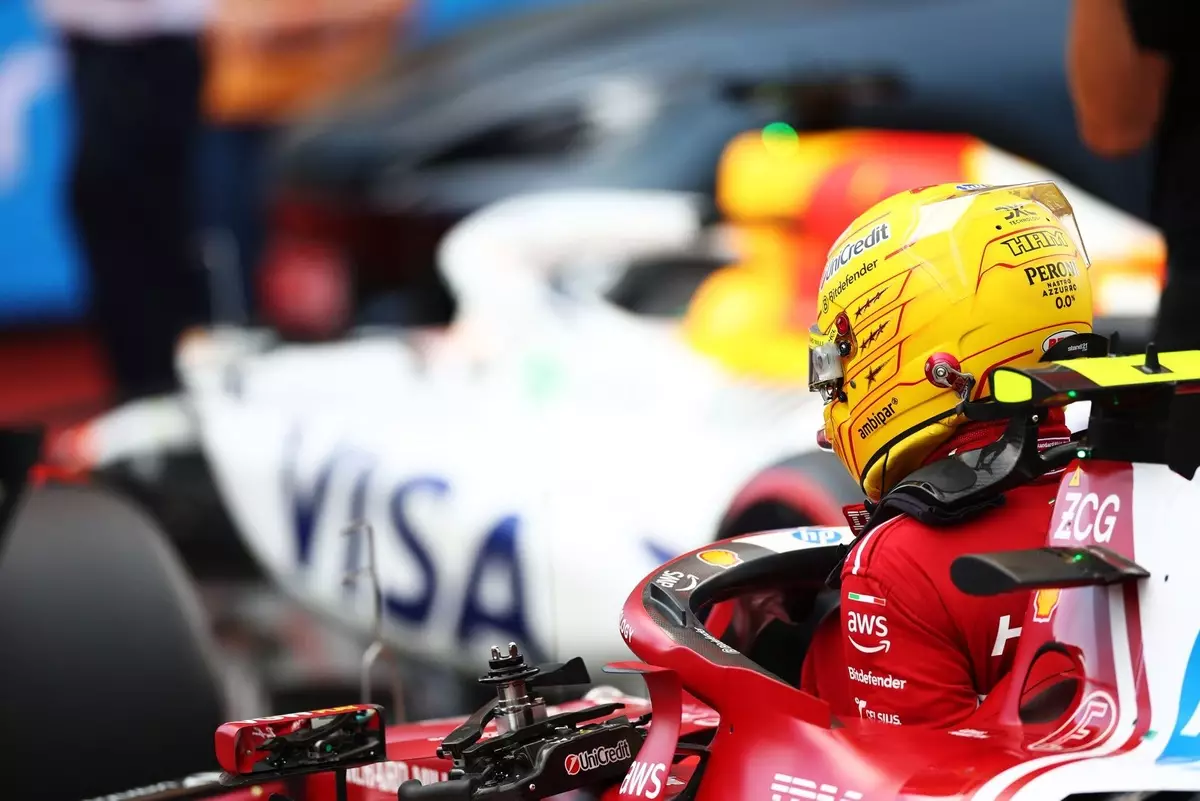At the iconic Circuit de Barcelona-Catalunya, Formula 1 veteran Lewis Hamilton was left feeling disillusioned after experiencing what he deemed “the worst race” of his illustrious career. Coming off a weekend marked by high expectations, the seven-time world champion found himself struggling to find the speed and performance needed to secure a strong finish. Despite starting in fourth place—a decent position after a strong start—Hamilton would soon lose ground, ultimately crossing the line in sixth after a disappointing race that saw him fighting to gain traction throughout.
Hamilton’s post-race mood was palpable; he entered the media pen with an air of frustration that colored his responses. The discourse with reporters reflected a man who had been bested not just by his competitors but also by the very machine he has pushed to its limits countless times before. After being overtaken by his teammate, George Russell, and later struggling against both Ferraris and other competitors, he found little solace even in a post-race bump to sixth due to Max Verstappen’s penalty. Such a scenario offered no glimmer of hope for Hamilton—only an echo of dissatisfaction.
Understanding the Struggles
What fueled this sense of frustration? Hamilton confirmed early on that a lack of rear grip had significantly hindered his performance. While the race strategy seemed solid enough at the outset, invoking earnest questions about the car’s setup would become a poignant discussion as laps ticked away. This persistent grip issue left Hamilton as a “sitting duck” in the latter stages of the race, where the competition was fierce and the novice’s fortunes took center stage.
Critically, Hamilton’s responses to journalists indicated not just disappointment but also a sense of desperation. Engaging with pressing questions turned into an exercise of deflection rather than clarity. On the inquiries surrounding the car’s performance, Hamilton was dismissive, indicating a deeper undercurrent of frustration. “I have no idea why you’d say that,” he commented brusquely, suggesting that even with years of experience, the variables pushing him backward on the track were beyond comprehension in that moment.
Such struggles raise the question: is there a systemic issue with the Mercedes team that needs immediate redress? For Hamilton—not one to shy away from acknowledging his team’s shortcomings—the philosophy of constant improvement must reign supreme as he heads toward the next race in Canada. The athlete’s resolve will surely be tested as he teams up with engineers to recalibrate their approach.
Leclerc’s Surprise Upswing
In stark contrast to Hamilton’s shades of gloom, Charles Leclerc emerged from the race invigorated, despite initially being in a less favorable position. Starting from seventh by the end of the pit cycles, Leclerc intuitively salvaged the day, especially with a late surge to clinch a podium position—a triumph not just of speed but strategic foresight.
Leclerc himself acknowledged the roller-coaster nature of his performance leading up to the race day. Having placed second in the previous Grand Prix at Monaco, he was able to translate pressure into performance here in Spain, albeit acknowledging that a lack of pre-race confidence almost led him to discount a podium finish entirely. “I knew I had sacrificed quality yesterday in order to be strong in the race today,” Leclerc noted—a mindset that differentiates champions from mere contestants in the complex world of racing.
While he celebrated this unexpected podium finish, Leclerc’s perspective was grounded. He recognized the significant room for improvement for himself and the Scuderia Ferrari team. Such realism offers a refreshing frame of reference; victories require both humility and acknowledgment of the competitive landscape, which can shift dramatically race after race.
Looking Ahead: The Battle Continues
As the F1 circuit moves on to Canada, both Hamilton and Leclerc carry critical lessons from their Spanish experiences, albeit on vastly different emotional planes. For Hamilton, the journey ahead means actionable steps to recalibrate his car’s performance and restore competitive vigor as the season unfolds. For Leclerc, the unexpected podium serves as fuel but also a reminder of the relentless pursuit of excellence amidst fluctuating fortunes.
The juxtaposition of their experiences highlights the multifaceted nature of competitive racing—where one driver’s despair is another’s elation. As the lights go out for the next event, the anticipation grows. Will Hamilton find redemption? Can Leclerc convert momentum into more consistent success? The excitement around F1 racing remains undiminished as these narratives develop on the asphalt, waiting to take shape in the upcoming chapters of this season.

